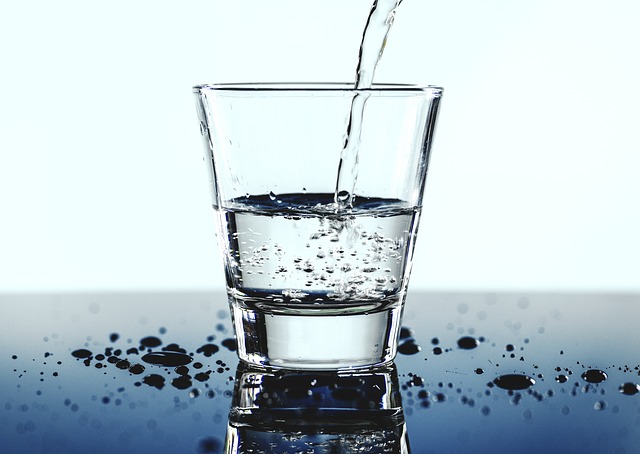Potable water
The term ‘potable’ means safe to drink, and is derived from the Latin ‘potare’ meaning ‘to drink’.
The term ‘potable water’ refers to water that is safe for humans to drink. This may be referred to as ‘drinking water’. The 2030 Agenda for Sustainable Development recognised access to safe drinking water as a human right. However, nearly a third of the global population do not use safely-managed drinking water.
Potable water is not ‘pure’ water (such as distilled water) but will include dissolved ‘impurities’ that are not harmful to health. It is also not ‘fresh water’. For example, rainwater might be considered to be ‘fresh’ but may not be suitable for drinking. Fresh water typically needs to be treated to make it suitable for drinking.
Water that is not suitable for drinking may be referred to as non-potable. Non-potable water can be made potable by processes such as desalination, distillation, reverse osmosis, screening, flocculation, filtration, chlorination and so on.
Approved Document G (Sanitation, hot water safety and water efficiency) of the building regulations sets out the water efficiency calculation methodology for assessing whole house potable water consumption in new dwellings, and defines maximum consumption levels in litres per person per day.
The supply of water to properties through the water distribution system (sometimes referred to as mains water) is more accurately referred to as ‘wholesome water’. Wholesome water is defined as water complying with the requirements of regulations made under Section 67 (Standards of wholesomeness) of the Water Industry Act 1991. The regulations made under this Section are; for England, the Private Water Supplies Regulations 2009 (SI 2009/3101), for Wales the Private Water Supplied (Wales) Regulations (SI 2010/66) and for England the Water Supply (Water Quality) Regulations 2000 (SI 2000/3184 as amended), and, for Wales, the Water Supply (Water Quality) Regulations 2001 (SI 2001/3911 as amended).
The UK has more than 416,175 kms of water mains, delivering 16.6 billion litres of wholesome water to 63.9 million people every day. This supplies some of the cleanest drinking water in the world. 99.97% of water samples in England and Wales met the Drinking Water Inspectorate’s standards in 2013. Ref https://www.gov.uk/government/publications/water-and-treated-water/water-and-treated-water
However, water that is supplied to premises may subsequently become non-potable, for example if it is stored in an open tank, if pipework is made from lead and so on.
Non-wholesome water must not be inadvertently supplied in place of wholesome water and it should not be permitted to contaminate wholesome water systems, for example, by mis-connection. Pipes carrying non-wholesome water should be marked clearly, using different types of pipework to avoid mis-connection.
[edit] Related articles on Designing Buildings
- Back siphonage.
- Blackwater.
- Do our water quality standards demonstrate to the public that their water supply is clean?
- Desalination.
- Drainage.
- Drains.
- Filtration.
- Foul water.
- Greywater.
- Groundwater.
- Mains water.
- Non-wholesome water.
- Sanitary pipework.
- Sewerage.
- Types of water.
- Water quality.
- Waste water.
- Wholesome water.
Featured articles and news
One of the most impressive Victorian architects. Book review.
RTPI leader to become new CIOB Chief Executive Officer
Dr Victoria Hills MRTPI, FICE to take over after Caroline Gumble’s departure.
Social and affordable housing, a long term plan for delivery
The “Delivering a Decade of Renewal for Social and Affordable Housing” strategy sets out future path.
A change to adoptive architecture
Effects of global weather warming on architectural detailing, material choice and human interaction.
The proposed publicly owned and backed subsidiary of Homes England, to facilitate new homes.
How big is the problem and what can we do to mitigate the effects?
Overheating guidance and tools for building designers
A number of cool guides to help with the heat.
The UK's Modern Industrial Strategy: A 10 year plan
Previous consultation criticism, current key elements and general support with some persisting reservations.
Building Safety Regulator reforms
New roles, new staff and a new fast track service pave the way for a single construction regulator.
Architectural Technologist CPDs and Communications
CIAT CPD… and how you can do it!
Cooling centres and cool spaces
Managing extreme heat in cities by directing the public to places for heat stress relief and water sources.
Winter gardens: A brief history and warm variations
Extending the season with glass in different forms and terms.
Restoring Great Yarmouth's Winter Gardens
Transforming one of the least sustainable constructions imaginable.
Construction Skills Mission Board launch sector drive
Newly formed government and industry collaboration set strategy for recruiting an additional 100,000 construction workers a year.
New Architects Code comes into effect in September 2025
ARB Architects Code of Conduct and Practice available with ongoing consultation regarding guidance.
Welsh Skills Body (Medr) launches ambitious plan
The new skills body brings together funding and regulation of tertiary education and research for the devolved nation.
Paul Gandy FCIOB announced as next CIOB President
Former Tilbury Douglas CEO takes helm.























